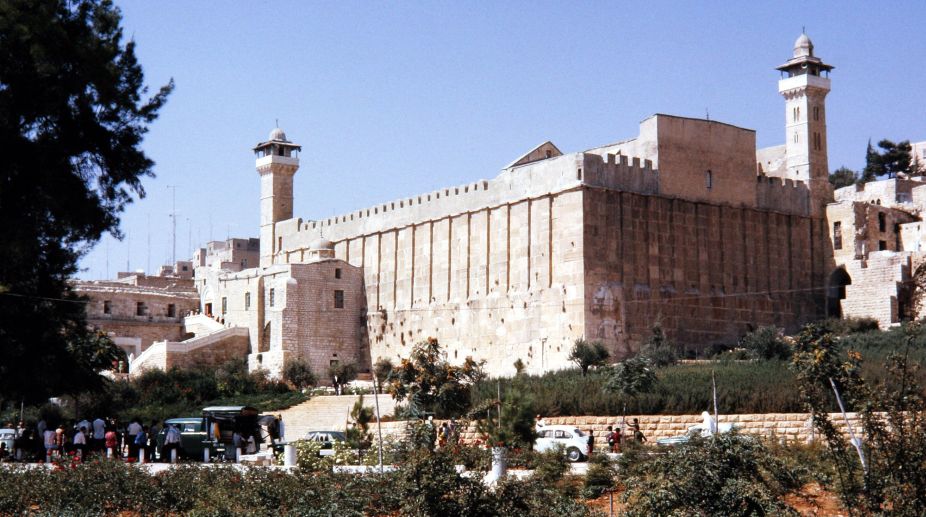KMC works on to ensure ownership rights of 3 disputed properties
The Kolkata Municipal Corporation is facing a quandary over three properties named in its list of assets, but owned by private parties.

(Photo: Getty Images)
As a young boy growing up in Bethlehem, I was often excited when our family had company. My dad, a Christian clergyman, loved to take us and the guests to Hebron.
Dad would take us to the Cave of the Machpela, situated within the Ibrahimi Mosque, where Abraham and his family are buried and would tell the story of how Abraham obeyed God’s calling even when it came to the request to sacrifice his own son. He would also tell us that the son in the Biblical story was Isaac, son of Sarah, while in the Koran the story refers to Ishmael, son of Hagar.
For us kids, the visit to Hebron, or alKhalil in Arabic (the Arabic name means “companion”, in reference to Abraham being God’s companion), was never complete without purchasing some of the amazing grape products. Not only did we often buy grapes when they were in season, but Dad, who had a sweet tooth, always bought some delicious treats: dibess(grape molasses), quttain (dried figs) and my personal favourite malban (dried sheets made of grape juice that stay tasty all year).
Advertisement
We also loved the glassmaking factories where skilled Hebronites made amazing glass creations while we watched. For me, the holy site and its cultural connection to Hebron are enough reasons to justify its recent designation as a World Heritage site by the United Nations Educational, Scientific and Cultural Organisation.
The barbed wire, metal detectors with heavily armed soldiers and rowdy settlers make a visit now totally unpleasant. Hebronites are also barred from many areas in parts of the old city, including Shuhada Street which the Israeli army bars Palestinians from using.
A massacre in the mosque by a Jewish settler who killed 29 Palestinian worshipers in 1994 also justifies Unesco’s decision to label the old city of Hebron/alKhalil as an endangered site.
The old town of Hebron/al-Khalil became a Unesco World Heritage site with a 12-to-3 vote with six abstentions – despite Israeli pressures and the decision to have the votes cast in secret. The authors of the Unesco resolution, who did not consider the question of religion as part of the process, were careful to give the old town and the holy places in it their due course.
The wording of the resolution is politically correct, giving historical background to the site and not ignoring its religious importance to Jews, Christians or Muslims. The resolution passed last week, garnering the necessary two-thirds majority votes. In reaction to the process, Israeli officials had blocked a Unesco delegation on June 26 from visiting Hebron, seeming to have lost any connection to the reality that they are an occupying power in Hebron.
Prime Minister Benjamin Netanyahu attacked the resolution, calling it in a Facebook post “delusional” and saying, “This time they decided that the Tomb of the Patriarchs in Hebron is a Palestinian site, meaning that it is not Jewish.”
But the Los Angeles-based Jewish Telegraph corrected the Israeli prime minister. It correctly reported that the resolution “did not mention the Cave of the Machpela, and does not designate the site as Palestinian.”
The angry and even vulgar reaction of the Israeli delegate (whose actions caused the Polish diplomat to call in security) is reminiscent of a country that is unable to accept that other religions and cultures exist in these holy lands. Naturally, the resolution brought to the Unesco World Heritage Committee was raised by Palestinian Ambassador to Unesco Elias Sanbar, but the resolution itself doesn’t identify the site as being Palestinian.
The governor of Hebron, Kamel Hamed, was humble in his reaction to the resolution passed in Krakow, Poland.
“With its cultural and human heritage, this decision shows that Hebron is important to the entire world and not just Palestinians,” he said. For centuries, the people of Hebron/al-Khalil have kept and protected the Ibrahimi Mosque, where Abraham and his family, revered by all Abrahamic religions, are said to have been buried.
Declaring that Hebron is part of the occupied territories, thereby giving Palestinians the responsibility of taking care of the holy sites in those areas, should not be controversial.
Not every country in the world that has Jewish or Muslim or Christian sites must somehow turn those sites over to the sovereignty of a country that has some kind of connection to that religion. Today there are Jewish and Christian holy sites in Jordan, for example.
Should Jordan relinquish these sites to Israel and the Vatican sovereignty, respectively? Of course not. Unesco states that what makes the concept of World Heritage exceptional is its universal application: “World Heritage sites belong to all the peoples of the world, irrespective of the territory on which they are located.”
The ruling that Hebron/al-Khalil is officially an endangered World Heritage site should not be seen as being anti Semitic, anti-Israeli or pro-Palestinian. Instead, it should be seen as the governor of the city saw it: The heritage of the city is much bigger than Palestinians and Jews.
As for me, I hope to continue to visit Hebron/al-Khalil to see the glass factories and to buy those amazing sheets of malban for my children and grandchildren to enjoy.
(The writer is a Palestinian journalist and former Ferris professor of journalism at Princeton University By arrangement with The Washington Post)
Advertisement